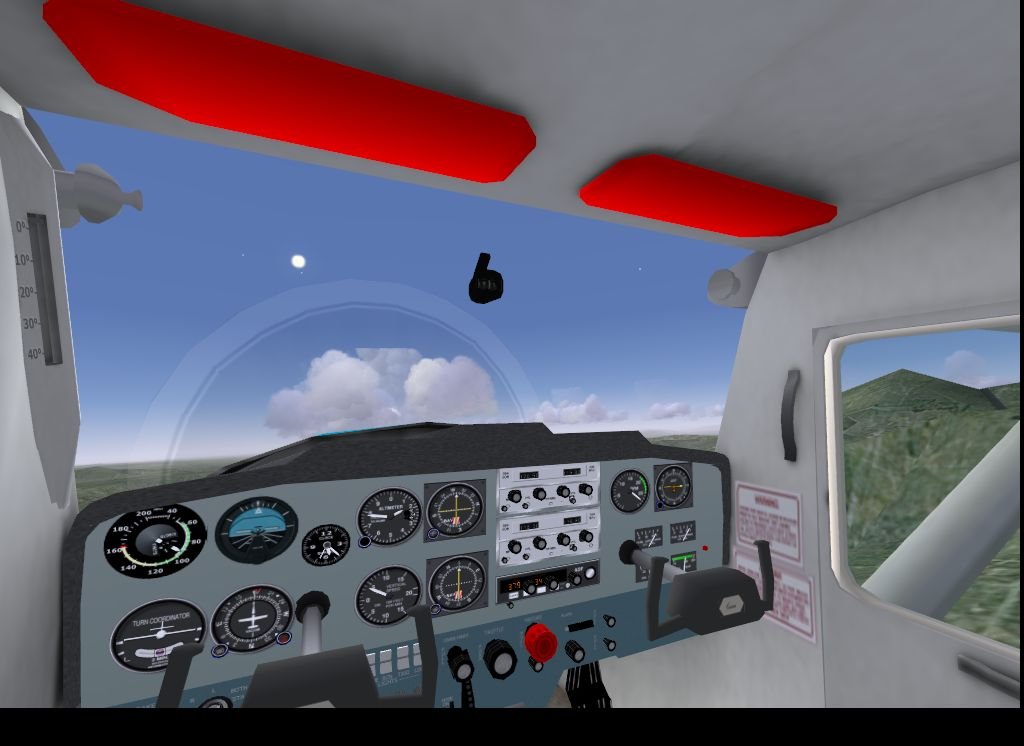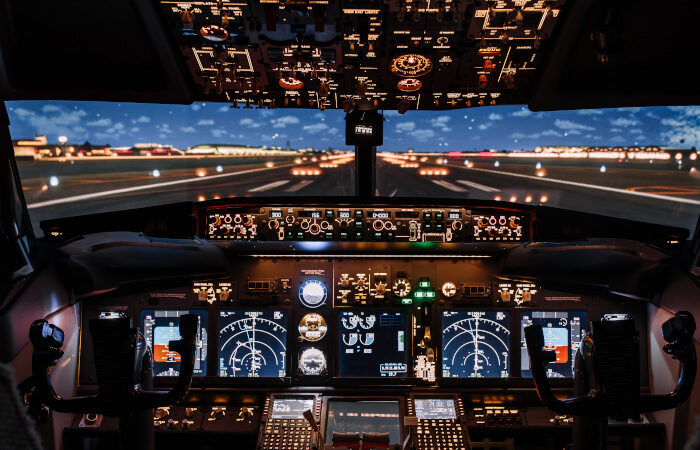Flight Gear is a free and highly sophisticated flight simulator.
The project is primarily aimed at civilian flight simulation. It should be appropriate for simulating general aviation as well as civilian aircraft.
In Flight Gear, scenery is divided into two kinds of data: Objects and Terrain. Objects are the buildings, bridges and radio towers, etc. that represent three-dimensional structures. Terrain represents the contours, elevations and type of ground you fly over.
Features include:
- Wide range of aircraft models from gliders to helicopters, and from airliners to fighter jets.
- Over 20,000 real world airports included in the full scenery set.
- Correct runway markings and placement, correct runway and approach lighting.
- Taxiways available for many larger airports (even including the green center line lights when appropriate).
- Sloping runways (runways change elevation like they usually do in real life).
- Directional airport lighting that smoothly changes intensity as your relative view direction changes.
- World scenery fits on 3 DVD’s.
- Accurate terrain worldwide, based on the most recently released SRTM terrain data.) 3 arc second resolution (about 90m post spacing) for North and South America, Europe, Asia, Africa, and Australia.
- Scenery includes all vmap0 lakes, rivers, roads, railroads, cities, towns, land cover, etc.
- Nice scenery night lighting with ground lighting concentrated in urban areas (based on real maps) and headlights visible on major highways. This allows for realistic night VFR flying with the ability to spot towns and cities and follow roads.
- Scenery tiles are paged (loaded/unloaded) in a separate thread to minimize the frame rate hit when you need to load new areas.
- Implements extremely accurate time of day modeling with correctly placed sun, moon, stars, and planets for the specified time and date.
- 3 Flight Dynamics Models:
- JSBSim – a generic, 6DoF flight dynamics model for simulating the motion of flight vehicles.
- YAsim – an integrated part of FlightGear and uses a different approach than JSBSim by simulating the effect of the airflow on the different parts of an aircraft.
- UIUC – based on LaRCsim originally written by the NASA.
- Advanced Features
- Aircraft Carrier – supports carrier operations on the Nimitz, (located near San Fransisco) and Eisenhower.
- Atlas – supports carrier operations on the Nimitz, (located near San Fransisco) and Eisenhower.
- Multiplayer – supports a multiplayer environment, allowing you to share the air with other flight-simmers.
- Multiple Displays – allows you to connect multiple instances of the program together to display different views of the simulation though a highly flexible I/O subsystem.
- Recording and Playback – ability to record your flight for later analysis or playback.
- Text to Speech with Festival – supports Text To Speech (TTS) for ATC and tutorial messages through the festival TTS engine.
- Air-Air Refuelling.
Website: www.flightgear.org
Support: FAQ
Developer: Curt Olson and many others
License: GNU General Public License

FlightGear is written in C++ and C. Learn C++ with our recommended free books and free tutorials. Learn C with our recommended free books and free tutorials.
| Popular series | |
|---|---|
| The largest compilation of the best free and open source software in the universe. Each article is supplied with a legendary ratings chart helping you to make informed decisions. | |
| Hundreds of in-depth reviews offering our unbiased and expert opinion on software. We offer helpful and impartial information. | |
| The Big List of Active Linux Distros is a large compilation of actively developed Linux distributions. | |
| Replace proprietary software with open source alternatives: Google, Microsoft, Apple, Adobe, IBM, Autodesk, Oracle, Atlassian, Corel, Cisco, Intuit, SAS, Progress, Salesforce, and Citrix | |
| Awesome Free Linux Games Tools showcases a series of tools that making gaming on Linux a more pleasurable experience. This is a new series. | |
| Machine Learning explores practical applications of machine learning and deep learning from a Linux perspective. We've written reviews of more than 40 self-hosted apps. All are free and open source. | |
| New to Linux? Read our Linux for Starters series. We start right at the basics and teach you everything you need to know to get started with Linux. | |
| Alternatives to popular CLI tools showcases essential tools that are modern replacements for core Linux utilities. | |
| Essential Linux system tools focuses on small, indispensable utilities, useful for system administrators as well as regular users. | |
| Linux utilities to maximise your productivity. Small, indispensable tools, useful for anyone running a Linux machine. | |
| Surveys popular streaming services from a Linux perspective: Amazon Music Unlimited, Myuzi, Spotify, Deezer, Tidal. | |
| Saving Money with Linux looks at how you can reduce your energy bills running Linux. | |
| Home computers became commonplace in the 1980s. Emulate home computers including the Commodore 64, Amiga, Atari ST, ZX81, Amstrad CPC, and ZX Spectrum. | |
| Now and Then examines how promising open source software fared over the years. It can be a bumpy ride. | |
| Linux at Home looks at a range of home activities where Linux can play its part, making the most of our time at home, keeping active and engaged. | |
| Linux Candy reveals the lighter side of Linux. Have some fun and escape from the daily drudgery. | |
| Getting Started with Docker helps you master Docker, a set of platform as a service products that delivers software in packages called containers. | |
| Best Free Android Apps. We showcase free Android apps that are definitely worth downloading. There's a strict eligibility criteria for inclusion in this series. | |
| These best free books accelerate your learning of every programming language. Learn a new language today! | |
| These free tutorials offer the perfect tonic to our free programming books series. | |
| Linux Around The World showcases usergroups that are relevant to Linux enthusiasts. Great ways to meet up with fellow enthusiasts. | |
| Stars and Stripes is an occasional series looking at the impact of Linux in the USA. | |
